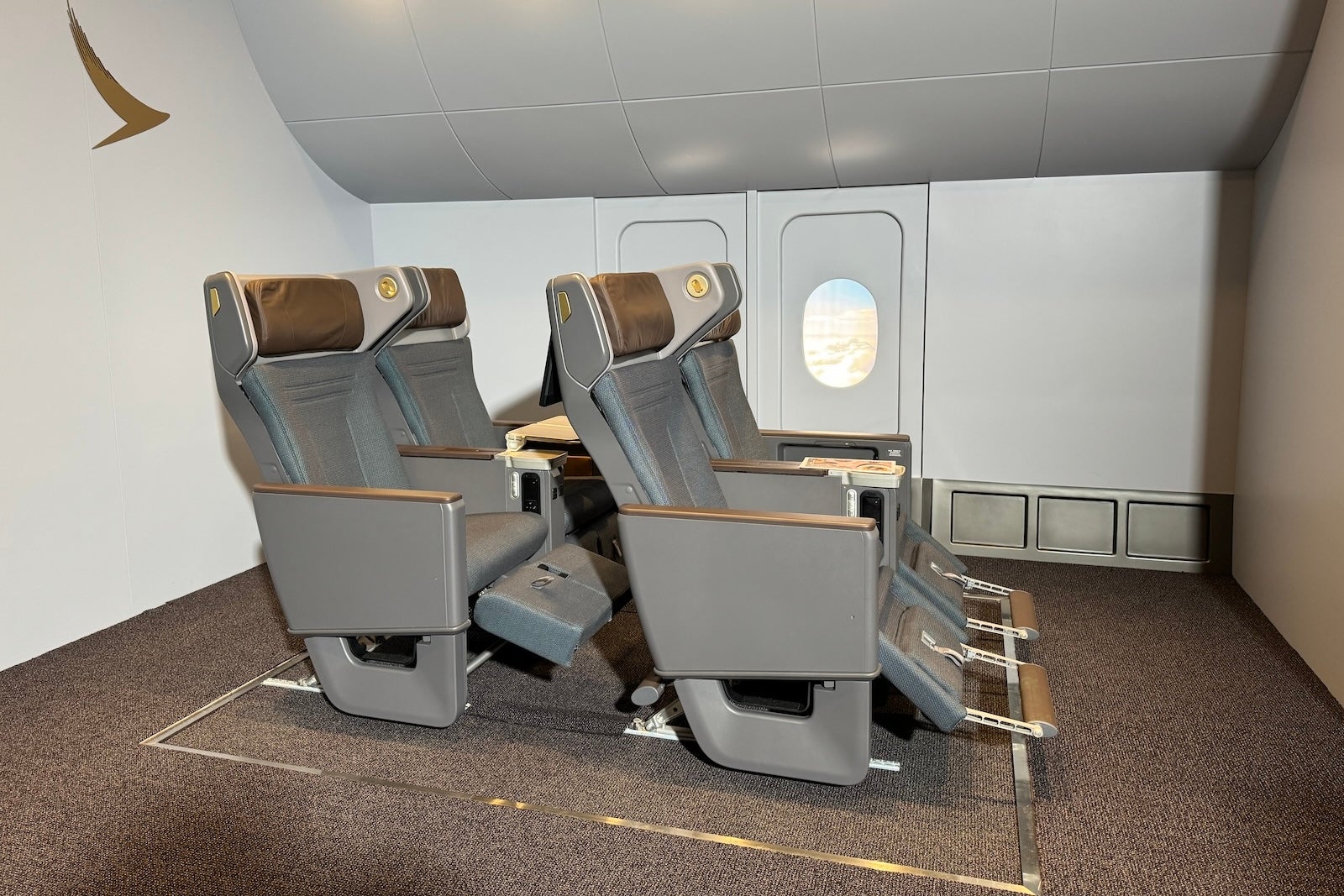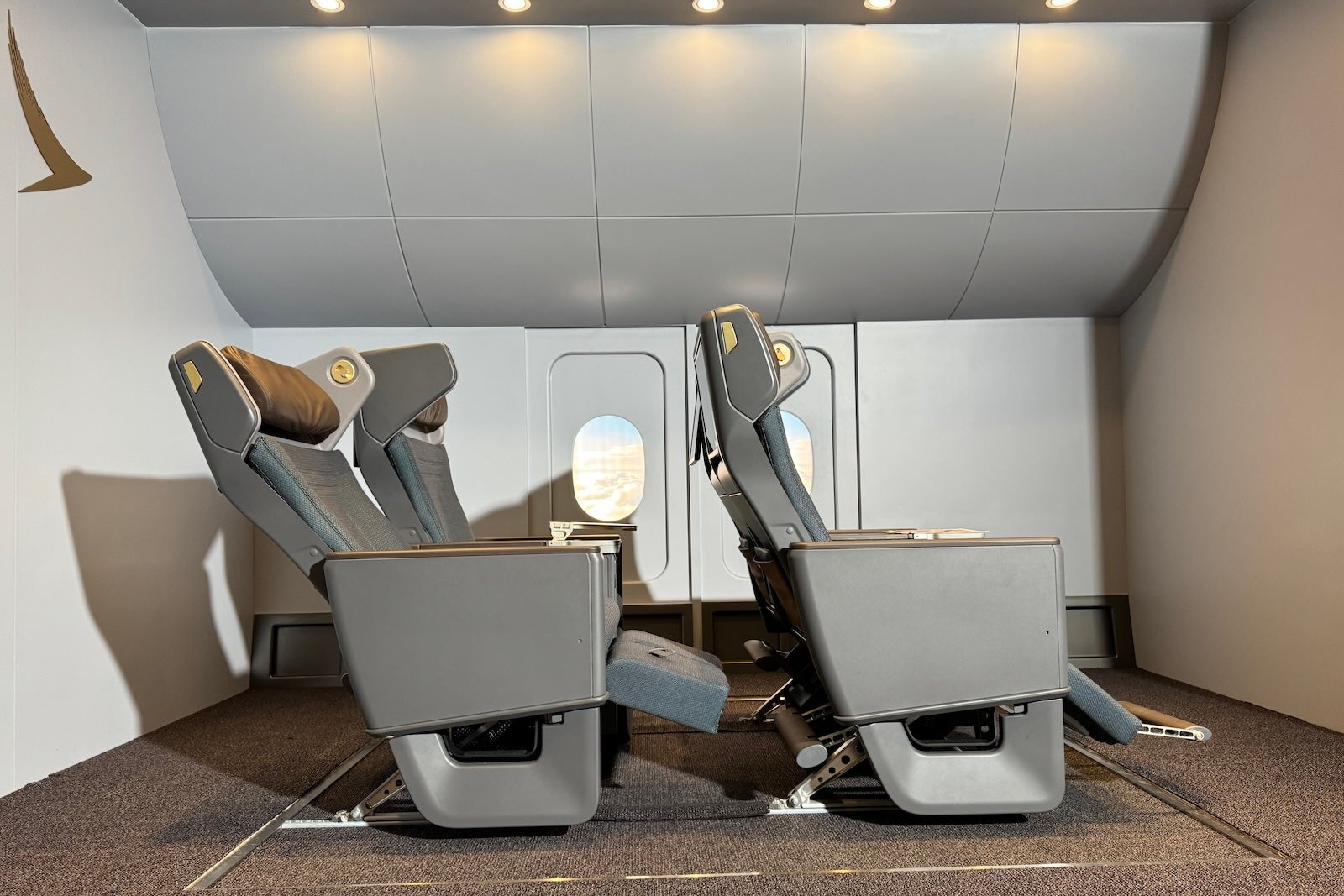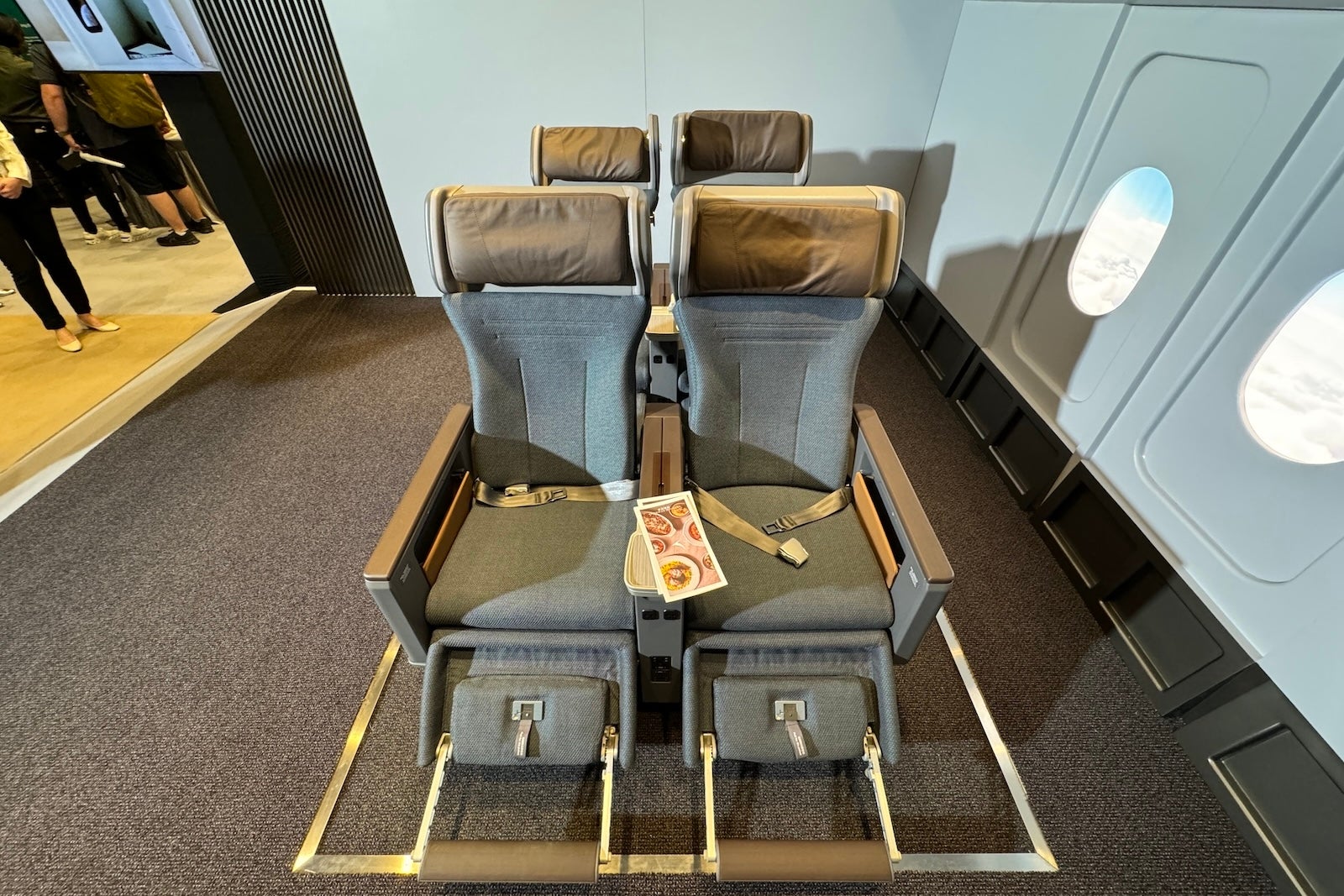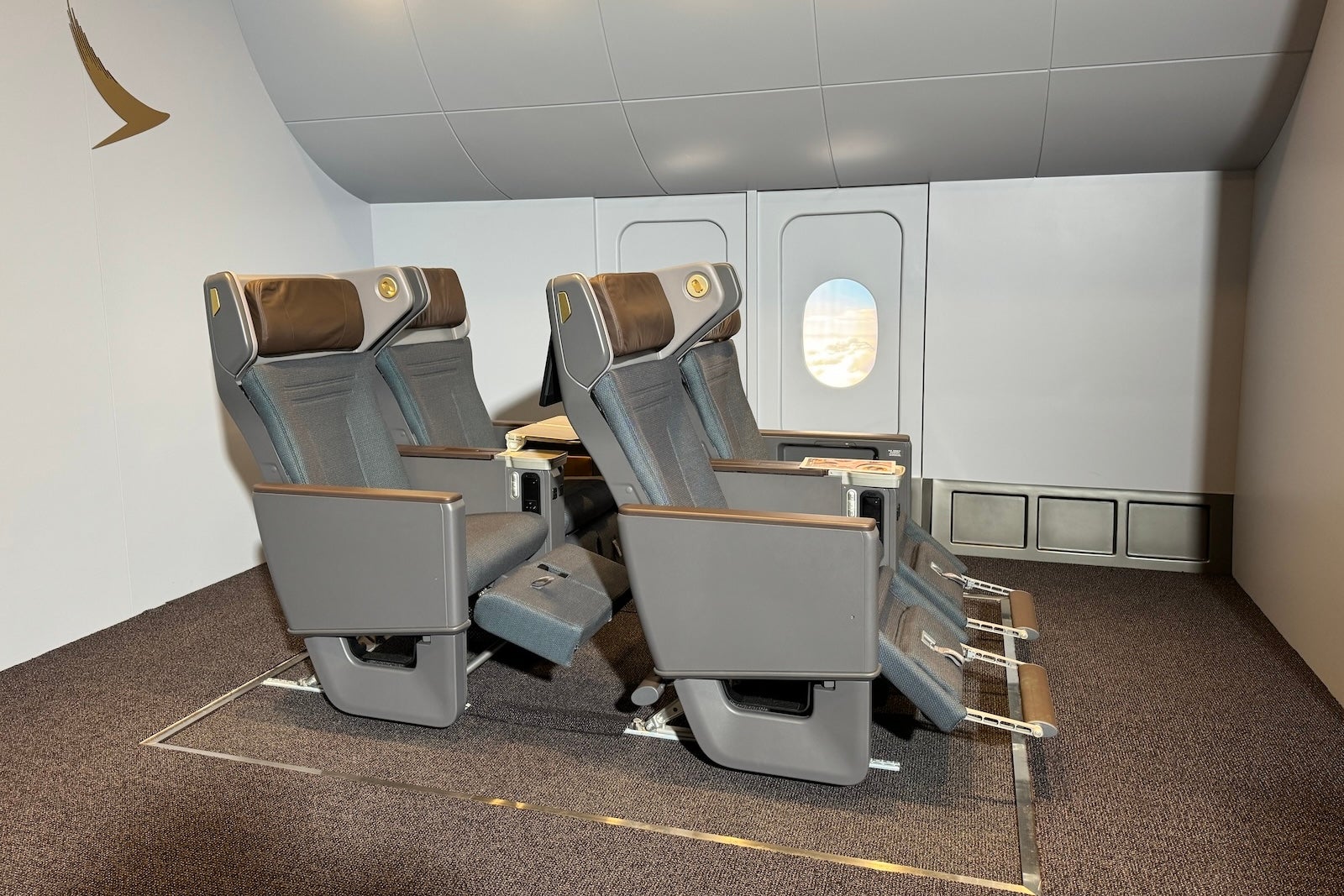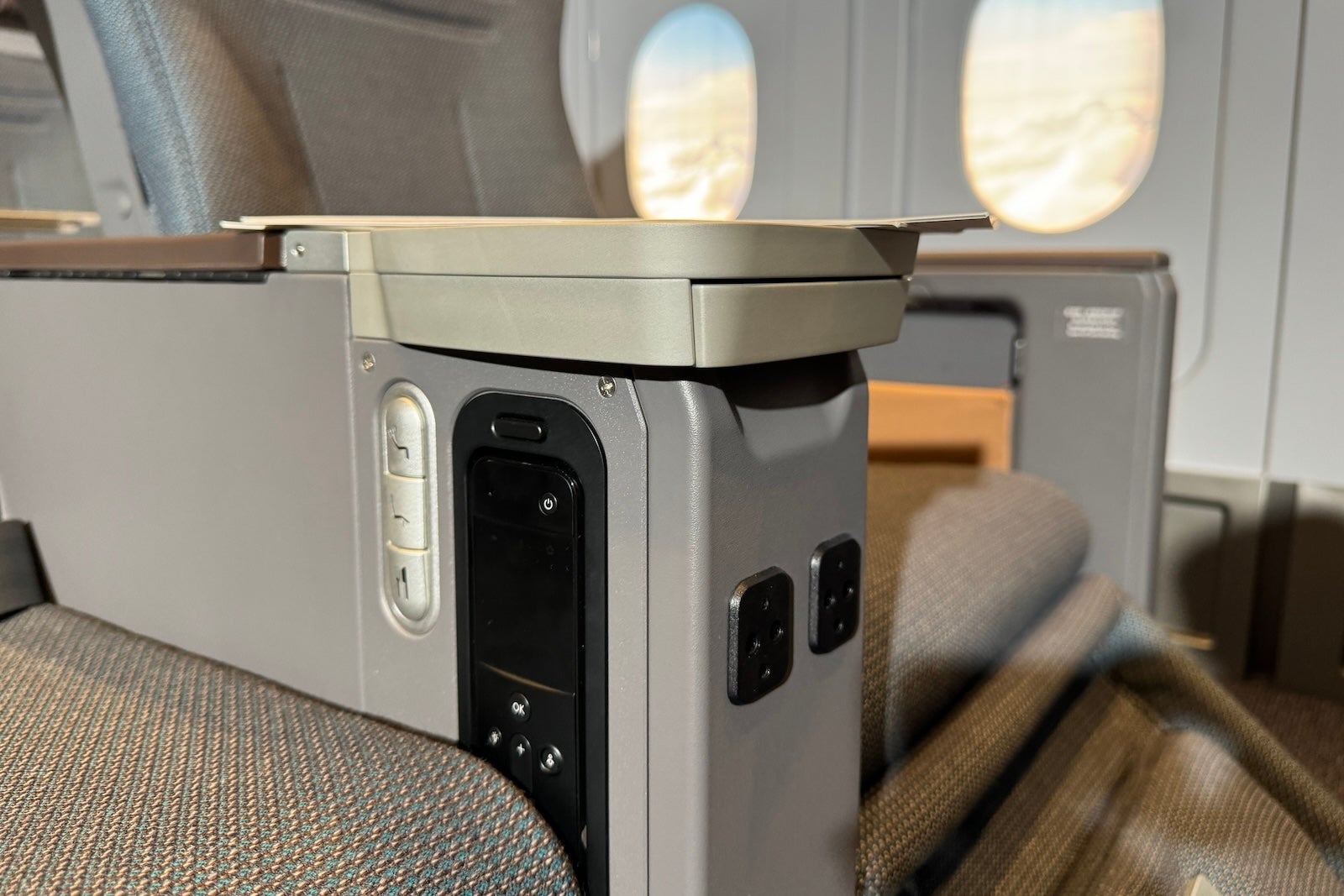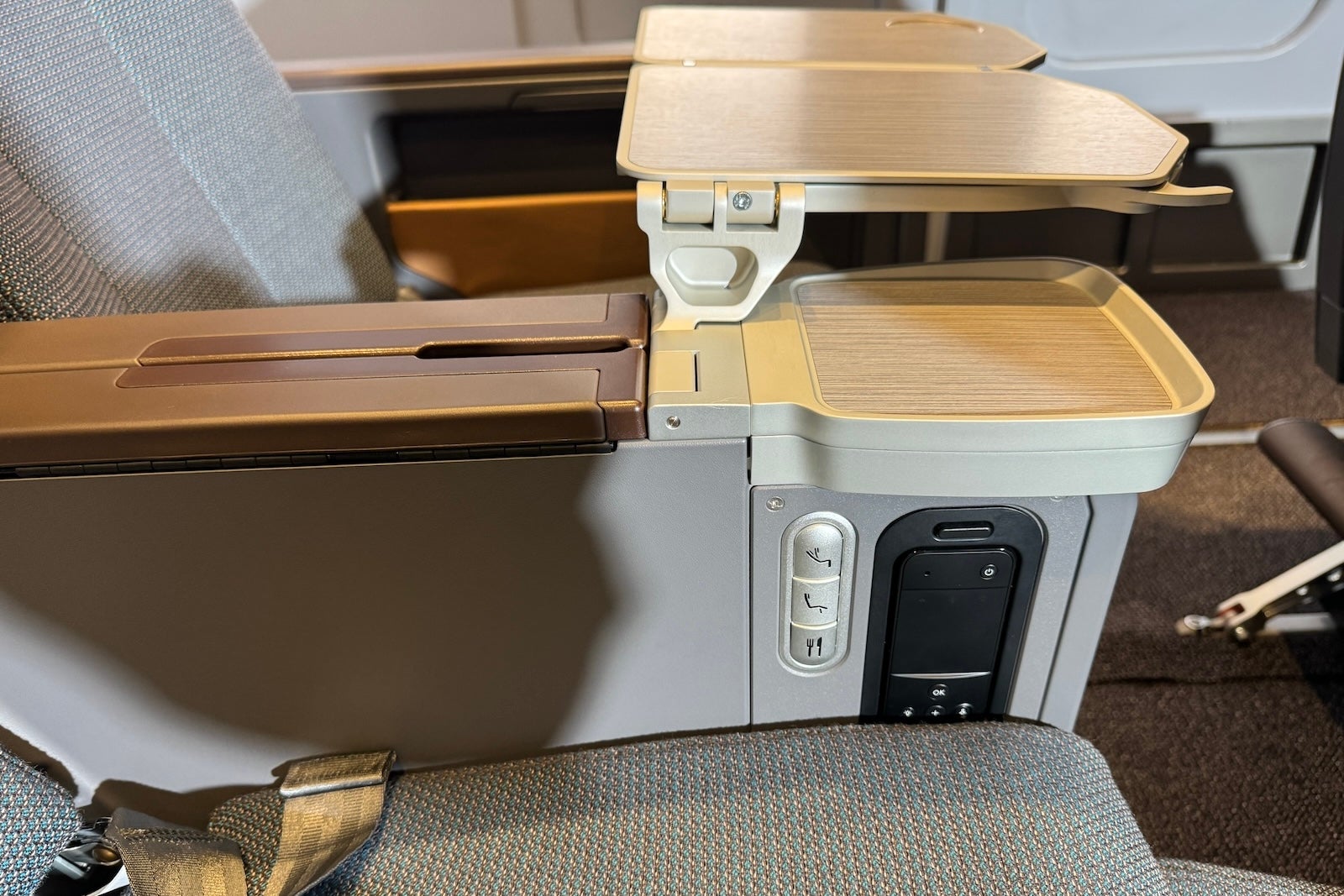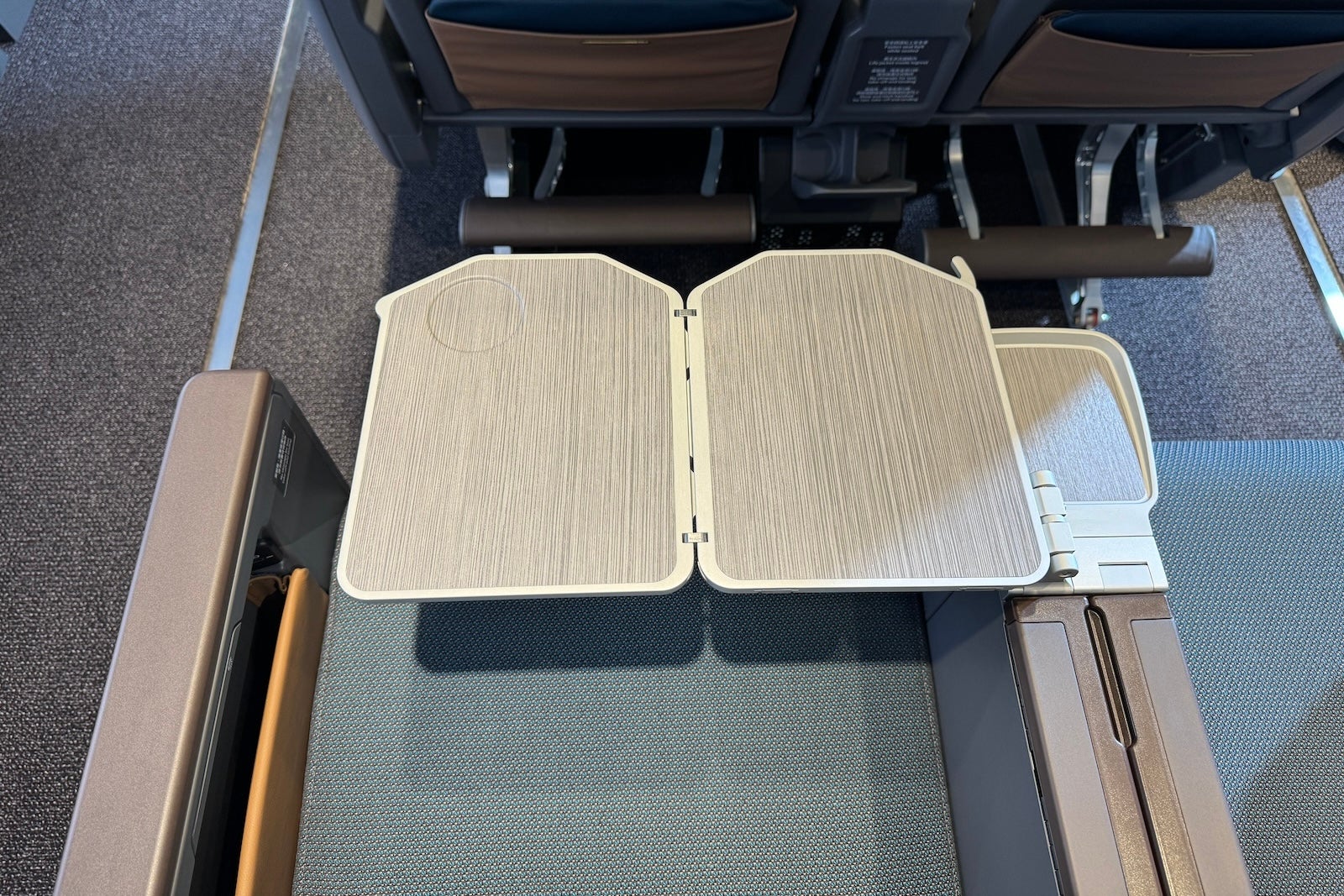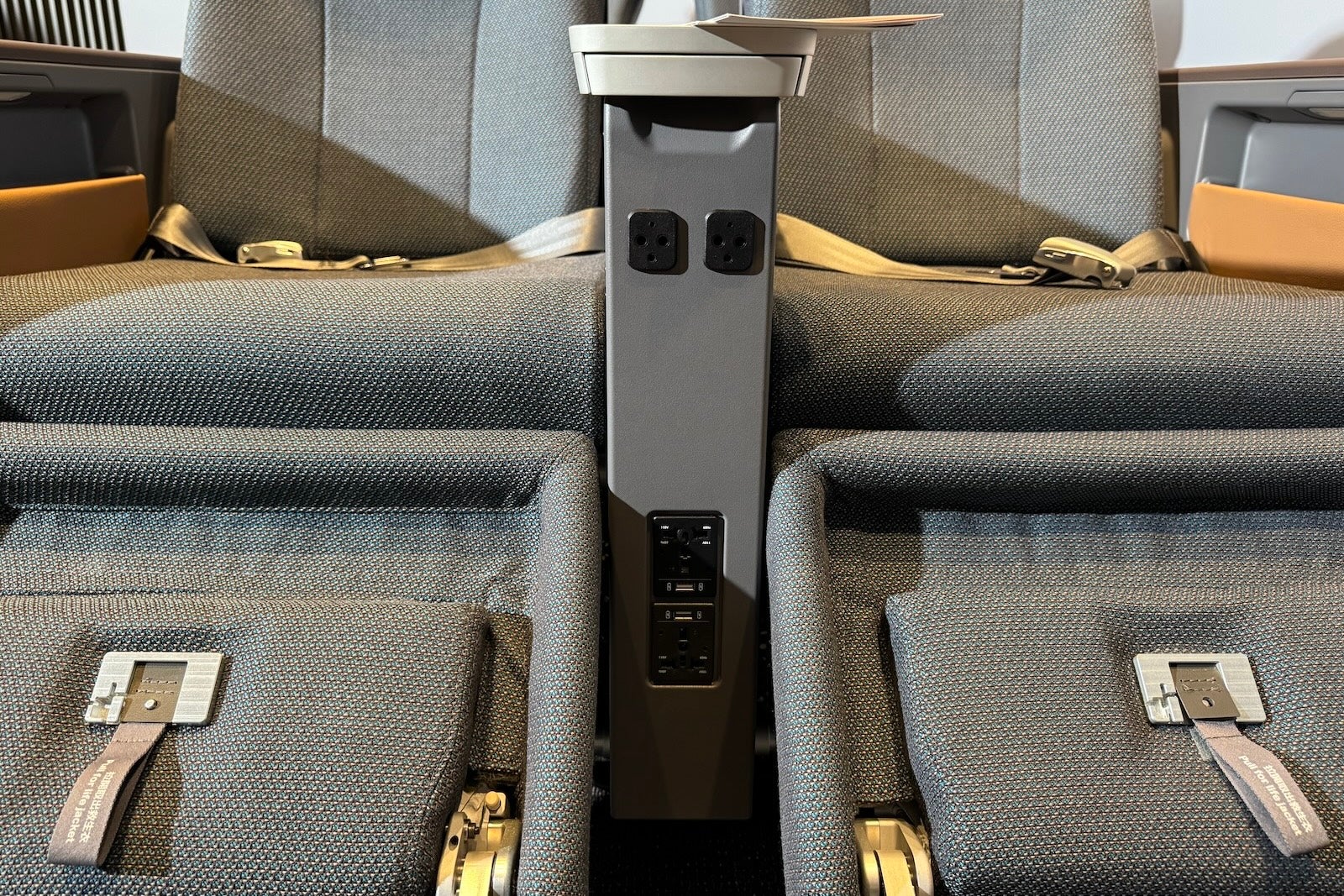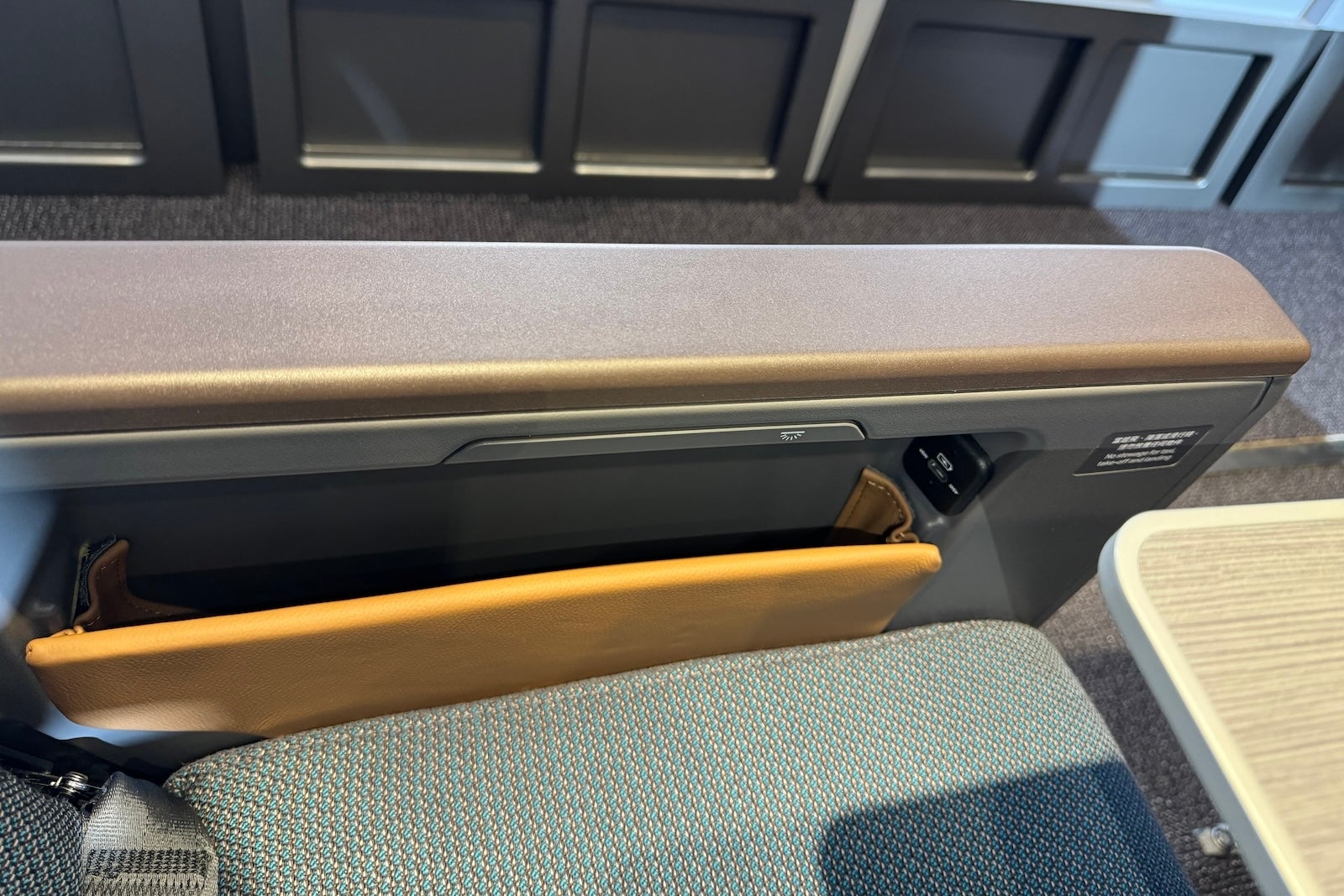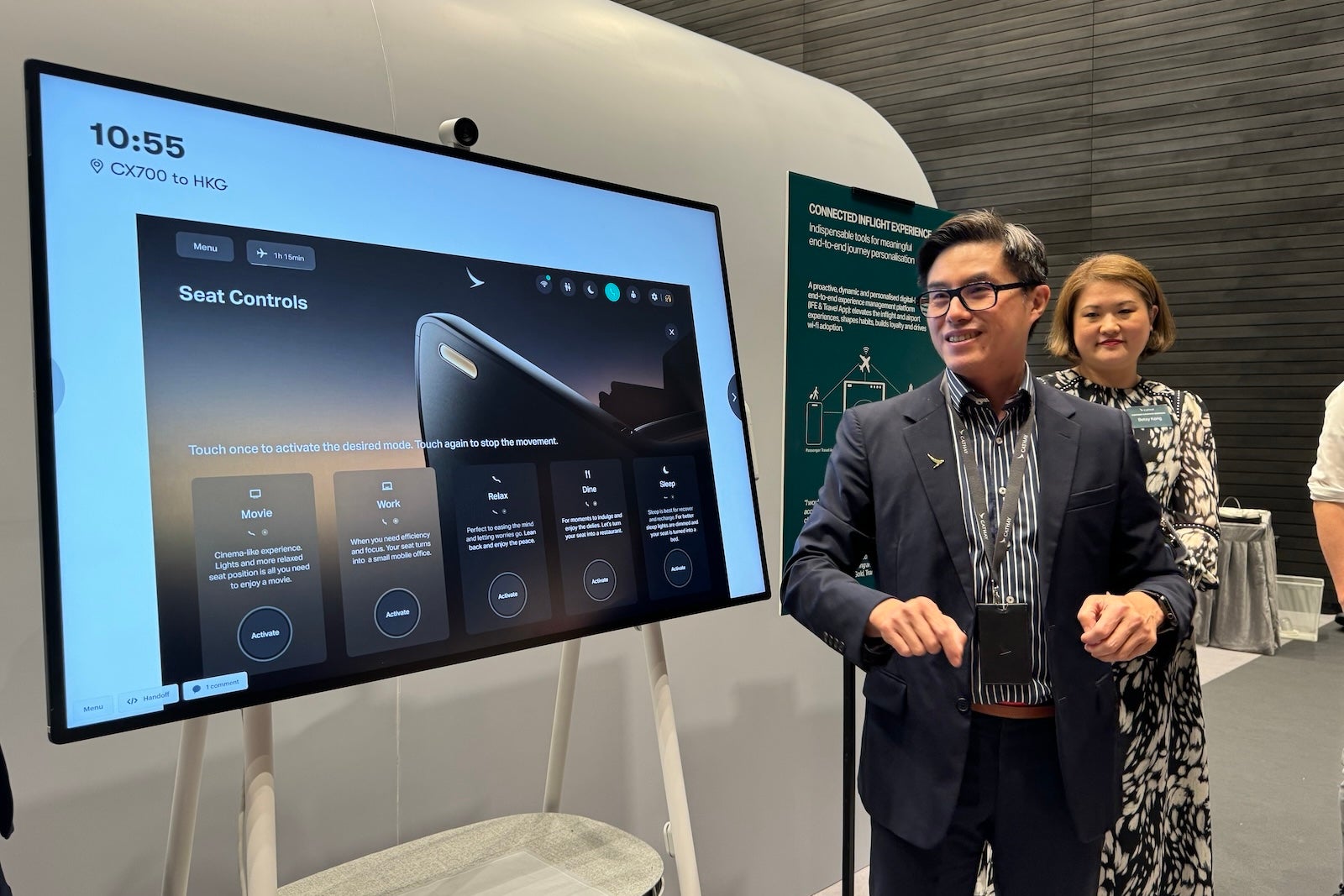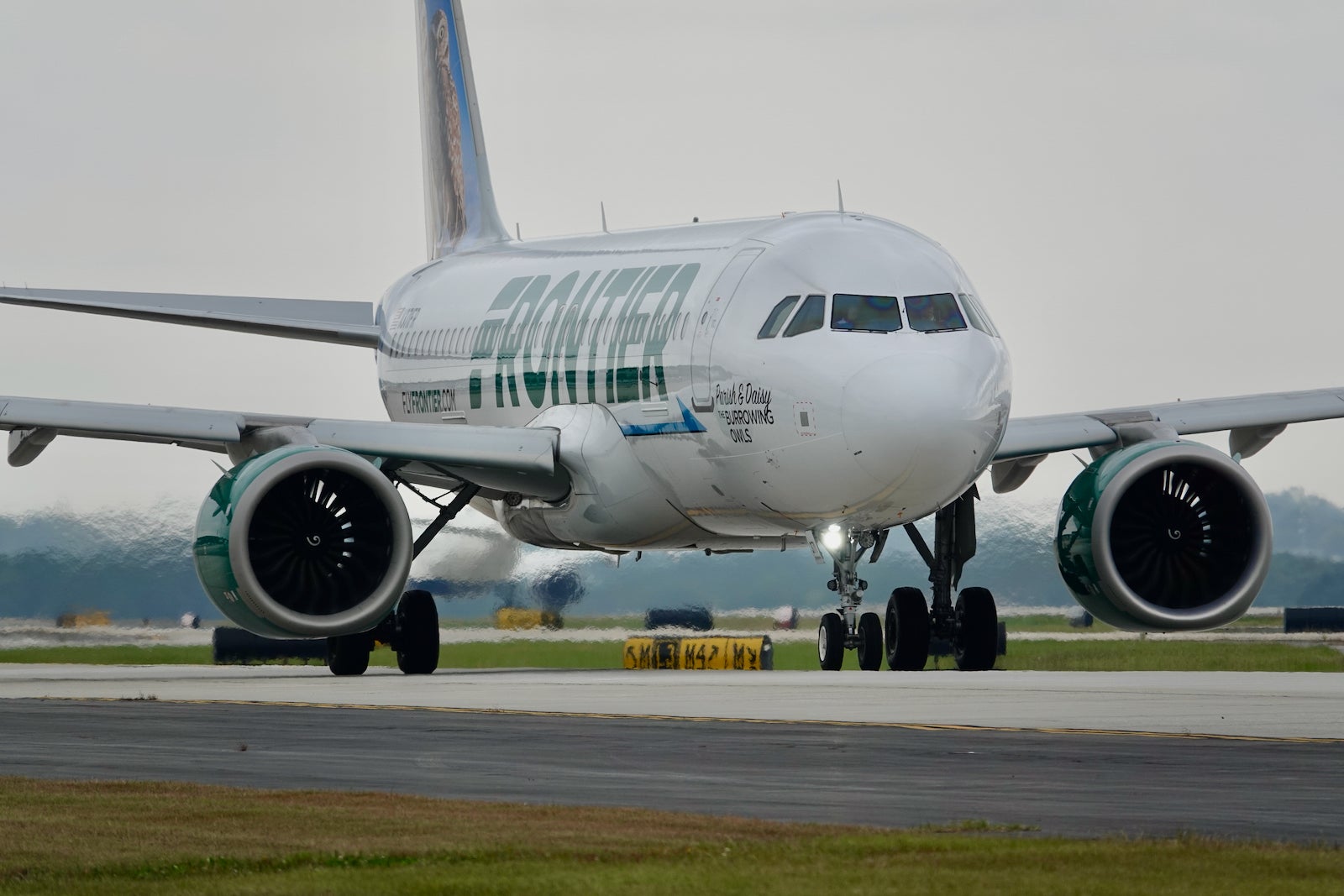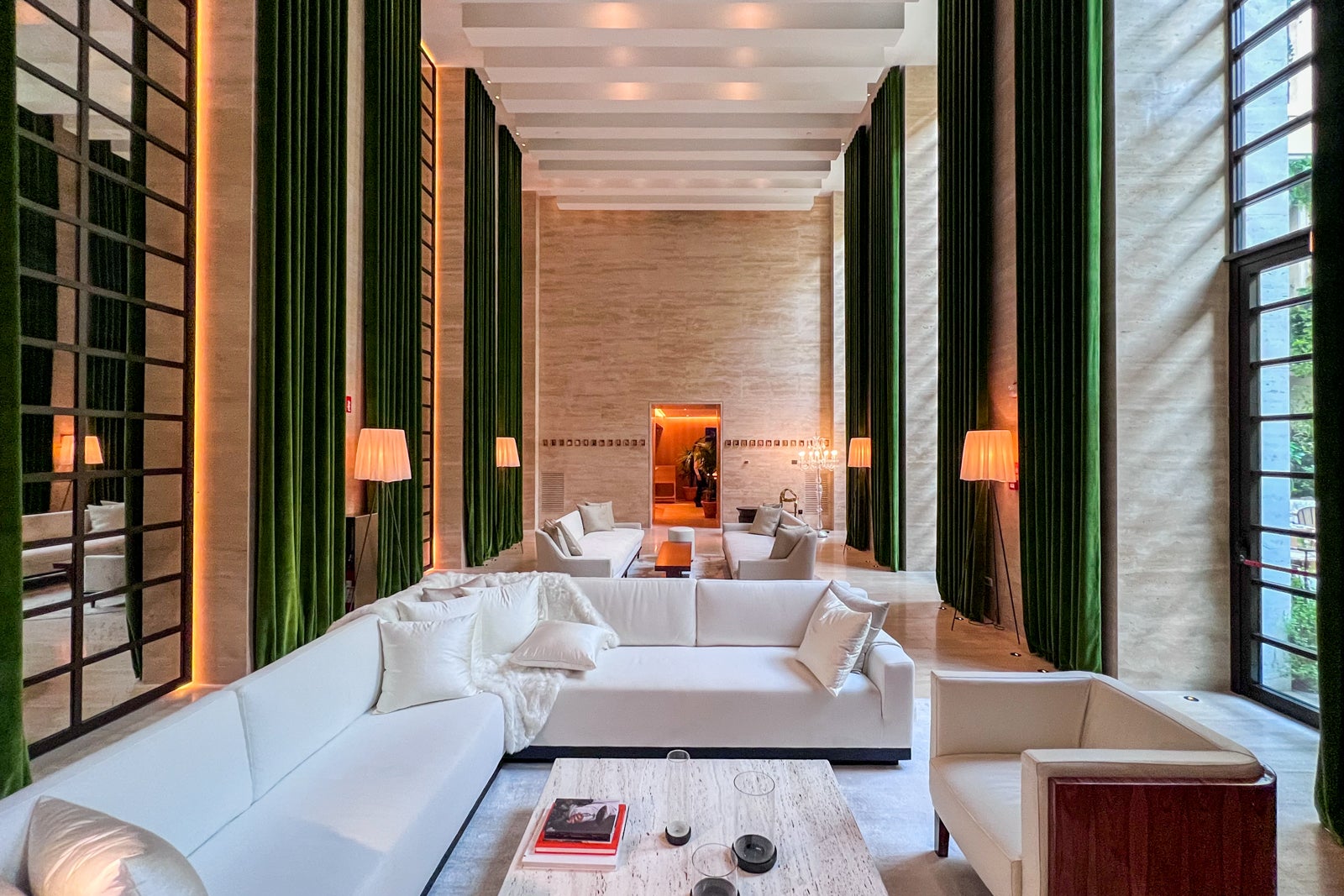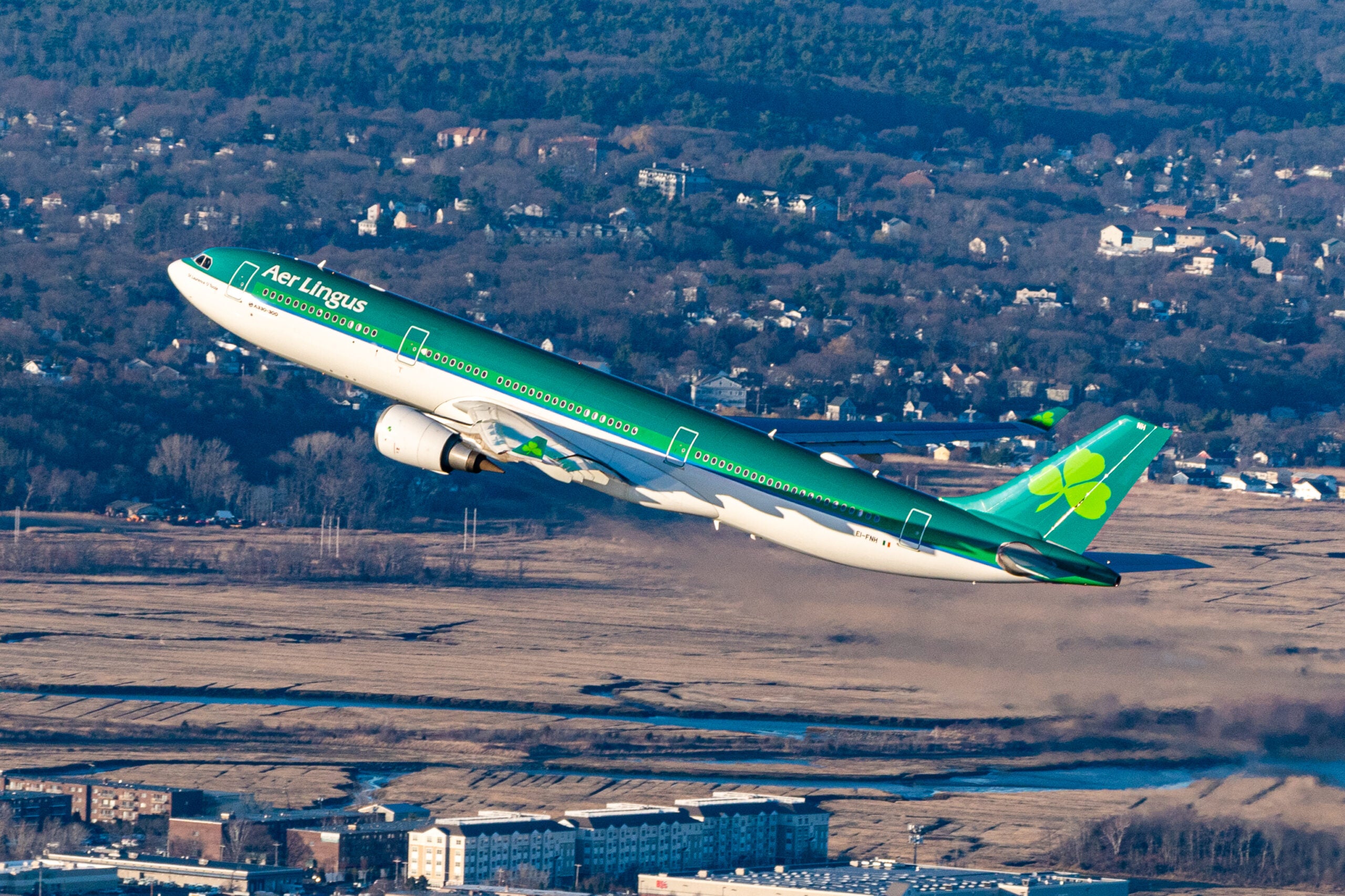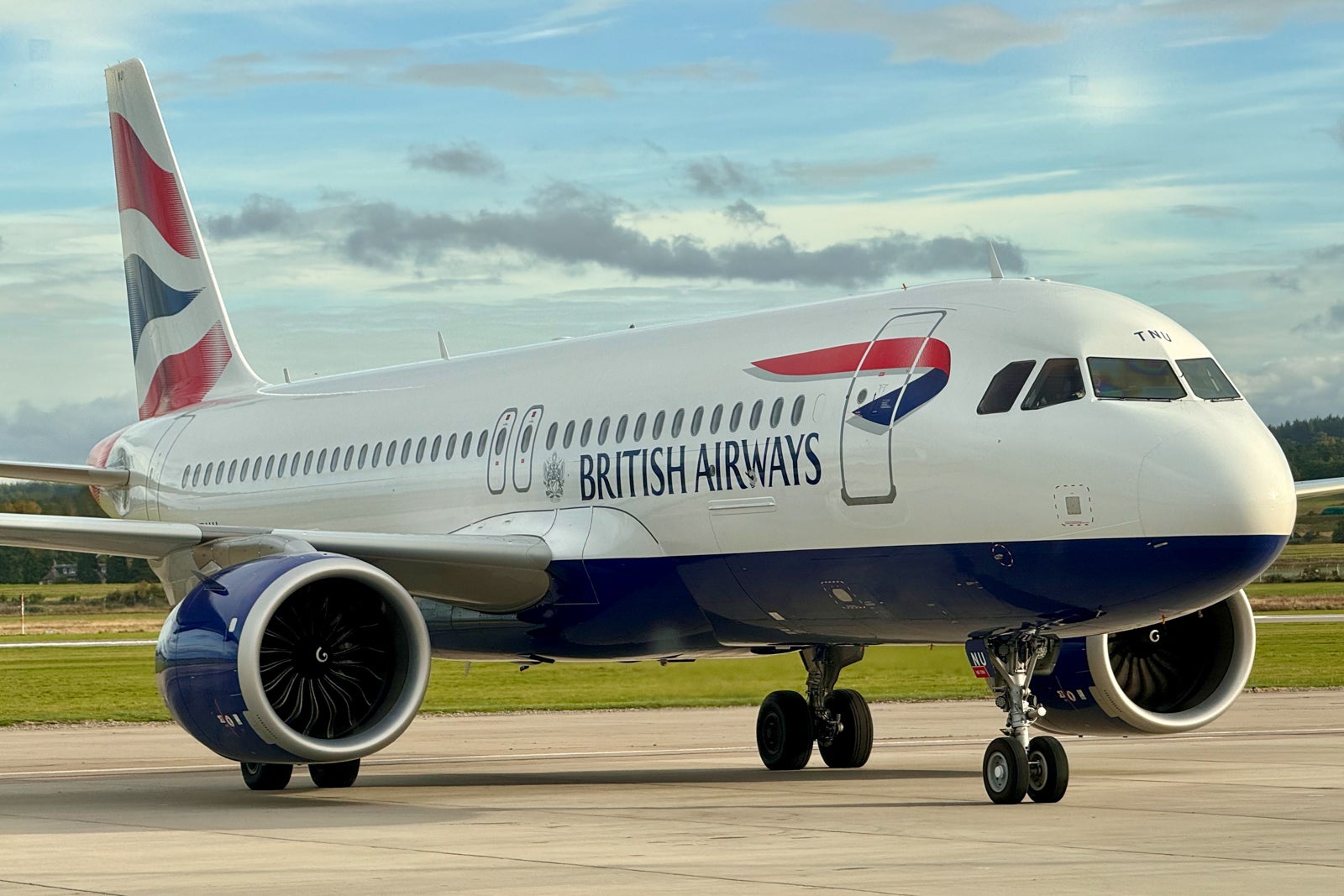Cathay Pacific new premium economy sneak peek
When Cathay Pacific revealed plans for its new suite-style “Aria” business class back in March, the aviation world was aflutter. But what might have gotten lost in the news was the fact that the airline will also be introducing a refreshed, third-generation premium economy product.
TPG got a first look at these new seats at the airline’s “Customer Experience Showcase,” which took place April 8 in Hong Kong’s West Kowloon Cultural District. Here are the exciting developments the airline shared and what passengers can look forward to once these seats go into service toward the middle of this year.
Cathay Pacific new premium economy seats and layout
“Human-centric design is what we’re known for – listening to customer insights is at the core of what we do,” Cathay Pacific’s general manager of customer experience and design, Vivian Lo, said as she welcomed media to the showcase. “All the product design you see today are the product many rounds of customer research and validation about what is important to the customers.”
Want more airline-specific news? Sign up for TPG’s free biweekly Aviation newsletter.
Like the airline’s current Boeing 777-300ER premium economy section, the cabins aboard refitted 777-300ERs will feature seats in a 2-4-2 pattern. The cabin will have 48 seats total, spread across six rows. That’s a 50% increase over the airline’s current 777 configurations, which have just 32 to 34 premium economy seats.
The current versions are like wide recliners, whereas the new fixtures feature a more sculptural, futuristic design. They are about 19 inches wide between armrests and have 40 inches of pitch.
They have hard shells that cradle the cushions and angular privacy wings adjacent to their headrests that extend about eight inches from the seatback. Seats on the aisles and windows only have these wings one the single side between them and another seat; the two seats in the center of each row have them on both sides. There is a flip-out reading light embedded in the wings as well.
The headrests are adjustable up and down with comfort wings of their own to help cushion passengers’ heads, and they will tip up to support passengers’ necks.
Unlike similar-looking seats on Japan Airlines’ A350-1000, these seats do physically recline (rather than sliding down within their shell) and lean back about 8 inches, just as the airline’s current premium economy recliners do. They measure about 19 inches wide between armrests.

Daily Newsletter
Reward your inbox with the TPG Daily newsletter
Join over 700,000 readers for breaking news, in-depth guides and exclusive deals from TPG’s experts
Also unlike JAL’s seats, the Cathay Pacific ones will not be motorized; rather, their individual parts, including the seatback and leg rest, will be operable using buttons.
The seats have leg rests for ergonomic comfort with footrests that flip out from their bottoms and can be adjusted closer or farther, depending on the passenger’s height. This more closely resembles the airline’s A350 premium economy setup since the current 777-300ER seats just have footrests.
Seats have bifold tables that pull out of the armrests in addition to small drinks trays — one that’s part of the armrest between neighboring seats and another that pulls out from just below this.
Premium economy passengers will have two dedicated lavatories, one on either side of the cabin, each with touch-free sinks and toilets for hygienic purposes.
Cathay Pacific new premium economy seat features
The new Cathay Pacific premium economy seats will sport exciting technological updates as well.
Chief among them, their inflight entertainment screens are 15.6 inches diagonally (compared to 10.6 inches on current 777-300ERs and 12.1 inches on the Airbus A350-900 and -1000). They have 4K resolution and the option for Bluetooth audio pairing if you want to use your own headphones. The screens tilt up from the seatback as well, so if the passenger in front of you is reclining, you can still view the content easily.
1 of 2
ERIC ROSEN/THE POINTS GUY
Just below them, a fold-down shelf pops out so you can rest your own personal entertainment device should you prefer to use it instead.
Another update? Each seat will have both USB-A and USB-C ports (compared to just USB-A on current versions) as well as a universal power point.
The power point and USB-A ports are embedded in the central column between pairs of seats. The USB-C port is in a small seat-side cubby; the cubby has a handy light so you can see where your phone or other belongings are.
Which planes will feature the new Cathay Pacific premium economy?
Like the airline’s Aria business class, Cathay’s latest iteration of premium economy will be installed on the airline’s eventual order of Boeing 777-9s and retrofitted onto its current 777-300ERs at a pace of about one per month. That means we should see the rollout start toward the middle of this year and carry through 2027 or so.
What happens to Cathay Pacific first class?
As part of the news about refitting the Boeing 777-300ERs, Lo also revealed that the refurbished planes remove the first-class seats in the process; they will just feature the new Aria business-class suites. The airline has a new first-class product in the works, but this will be reserved for its Boeing 777-9s, which will hopefully be delivered starting next year.
However, given the rolling delays on Boeing’s 777-9 rollout, there’s no telling for sure when these planes will arrive. Cathay has yet to release many details on its planned new first class. That said, there’s the multiyear rollout of the 777-300ER refurbishment process and, hopefully, the eventual appearance of 777-9s in the airline’s fleet. So, it might work out that as the 777-300s lose first class, they’ll be replaced fairly quickly by 777-9s with the new product onboard.
That creates issues for folks booking Cathay Pacific first class, as some will enjoy the new seats while some will be relegated to the old as the airline’s fleet is standardized. Given how rare (almost nonexistent) Cathay Pacific first-class awards have been in recent years, though, this might not affect many flyers.
Enhanced meals and beverages
In addition to its new premium economy seats, Cathay Pacific also showcased its new and ongoing partnerships for business- and first-class meals. This includes partnerships with famous Hong Kong restaurants Duddell’s and Louise — a French favorite. Among the sample dishes on display were steamed chicken with morel mushrooms and goji berries from Duddell’s and pan-seared beef tenderloin with Madeira jus and porcini puree from Louise.
1 of 5
ERIC ROSEN / THE POINTS GUY
Customers flying business class in the coming months might also find special wine offerings on board, including Taittinger Champagne and a variety of Chinese wines produced in the Ningxia and Shandong regions. Of course, the airline’s specially brewed Betsy beer, which is meant to be consumed at altitude, will also remain available.
1 of 2
ERIC ROSEN / THE POINTS GUY
Onboard and airport connectivity
Media representatives received a presentation on the technologically driven personalization enhancements the airline is hoping to implement in the coming months and years.
These include creating a customer profile to interface with seats’ inflight entertainment systems so that passengers can store preloaded seat positions and content playlists. The system might also eventually display flight connection information and lounge recommendations for Hong Kong International Airport (HGK) based on which ones the passenger has access to; it could show the passenger’s arrival and departure gates as well as general transit information.
Though these will be rolled out slowly and progressively, it points to how much the airline is pursuing customization as key to the passenger experience.
Bottom line
Cathay Pacific’s sleek new premium economy seats seem like another step forward for the airline’s already popular product. Hopefully, the process of putting them into service will go smoothly. Beyond that, hopefully, the airline will make them readily available for award redemptions, so passengers can enjoy more legroom and privacy than in economy.
Related reading:

